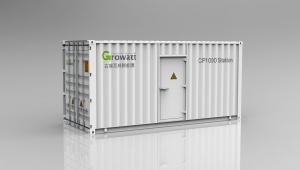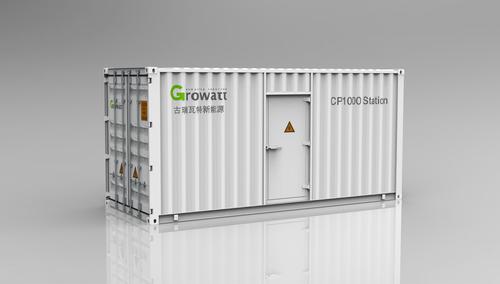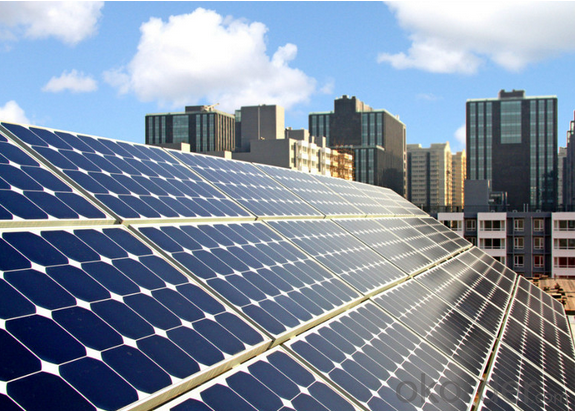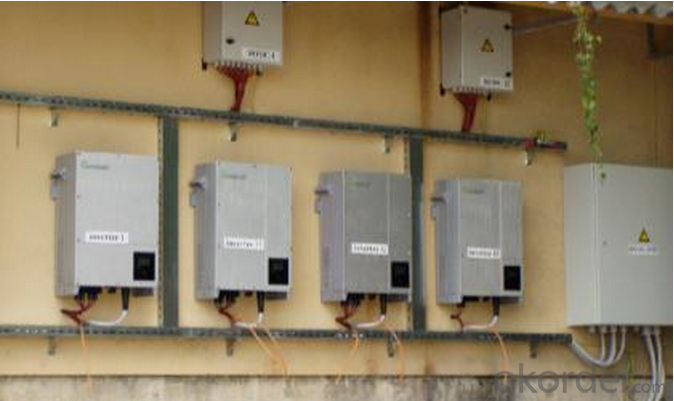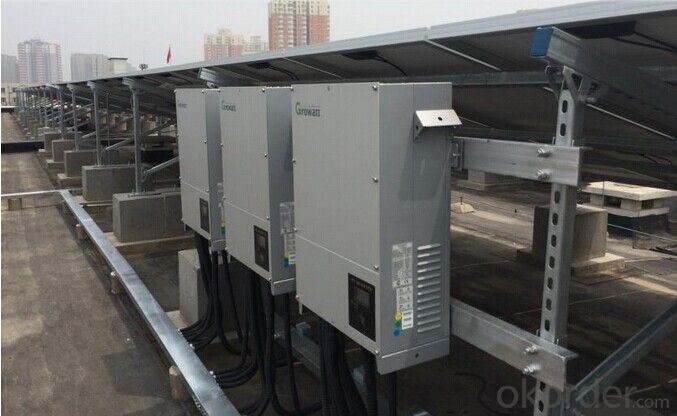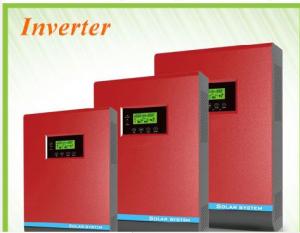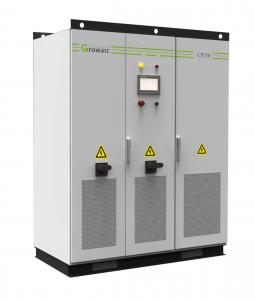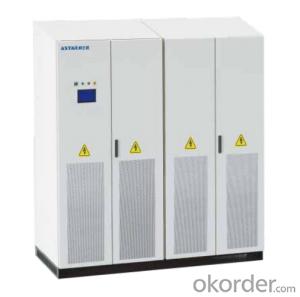Centralized Solar Inverter CP1000 Station,1260KW with TUV,EPEA,MEA,CE,CGC,LVRT,ZVRT 1.26MW
- Loading Port:
- Shekou
- Payment Terms:
- TT or LC
- Min Order Qty:
- 20 pc
- Supply Capability:
- 1000 pc/month
OKorder Service Pledge
OKorder Financial Service
You Might Also Like
1000kW integrated central inverter solution with DC distributed box and ac distributed box.
High conversion efficiency of 98.7% deliver more energy
Powerful grid management functions (including LVRT)
Active power continuous adjustment (0-100%)
Reactive power continuous adjustment (0-100%)
Integrated with SCADA monitoring system, totally compatible with smart-grid interface
Intelligent control, entirely meet the requirements of grid
Provide a turnkey solution, easy installation and maintenance
Comprehensive protection for overvoltage, islanding, short-circuit, overload, etc.
| CP1000 Station | CP1260 Station | |||
| Input data | ||||
| Max. DC power | 1150kW | 1450kW | ||
| Max. DC voltage | 1000V | 1000V | ||
| PV voltage range | 500V-1000V | 500V-1000V | ||
| MPP voltage range/nominal voltage | 500V-850V | 500V-850V | ||
| Rated Input voltage | 600V | 600V | ||
| Start voltage/power | 520V/10000W | 520V/12600W | ||
| Maximum Input current | 2240A | 2900A | ||
| Number of MPP trackers/strings per MPP tracker | 1 | 1 | ||
| Max. input current/per string | 2*10 | 2*10 | ||
| Output (AC) | ||||
| Rated AC output power | 1000kVA | 1000kVA | ||
| Rated AC voltage | 315V | 315V | ||
| AC voltage range | 250V-362V | 250V-362V | ||
| Rated frequency | 50Hz/60Hz | 50Hz/60Hz | ||
| Frequency Range | 45Hz-55Hz/55Hz-65Hz | 45Hz-55Hz/55Hz-65Hz | ||
| Rated Output Current | 1833A | 2310A | ||
| Maximum Output Current | 2016A | 2592A | ||
| Power factor | 0.9lagging-0.9leading | 0.9lagging-0.9leading | ||
| THDI | <3%(@Pac,r) | <3%(@Pac,r) | ||
| Efficiency | ||||
| Max. efficiency | 98.70% | 98.70% | ||
| Euro-eta | 98.50% | 98.50% | ||
| MPPT efficiency | 99.9% | 99.90% | ||
| Protection Devices | ||||
| DC disconnection device | DC circuit breaker | DC circuit breaker | ||
| AC disconnection device | AC circuit breaker | AC circuit breaker | ||
| DC overvoltage protection | Surge arrester type II | Surge arrester type II | ||
| AC overvoltage protection | Surge arrester type II | Surge arrester type II | ||
| Grid monitoring/Management | yes/yes | yes/yes | ||
| Ground monitoring | yes | yes | ||
| Over temperature protection | yes | yes | ||
| Insulation monitoring | yes | yes | ||
| General data | ||||
| Dimension (W/H/D)in mm | 3600/3000/2896 | 3600/3000/2896 | ||
| Weight | 6000KG | 6000KG | ||
| Operating Temperature Range | -25℃ ... +55℃ | -25℃ ... +55℃ | ||
| Relative Humidity | 0~95% | 0~95% | ||
| Degree of Protection | IP54 | IP54 | ||
| Noise Emission | 65dB(A)@1m | 65dB(A)@1m | ||
| Maximum Operating Altitude | 6000m(Derating over 3000m) | 6000m(Derating over 3000m) | ||
| Standby consumption | <200W | <200W | ||
| Cooling | Air forcedl | Air forcedl | ||
| Topology | Transformerless | Transformerless | ||
| Display | Touch screen LCD | Touch screen LCD | ||
| Communication Interface | RS485/Ethernet | RS485/Ethern | ||
| Certificates and ApprovalsCE, TUV, CGC, LVRT, ZVRT, PEA, G59 | ||||
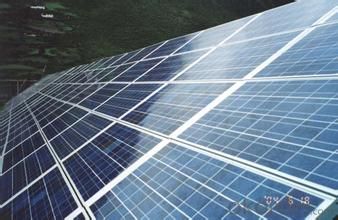
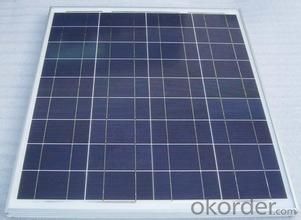
FAQ
1. Have any design tool and how to use it?
Shine Design is the system design software just for inverters, It can conduct installers to figure out panel numbers for a system, panel numbers for each string, and which inverter model is suitable for the system. Moreover, it can print a design report after input all necessary parameters, can calculate DC/AC wire wastage, annual generation, etc.
2. Does the inverter have monitoring solutions for residential system?
For small rating system, we have wired two monitoring solution (ShineNet via RS232 or RS485). (a) Local wireless monitoring solution (ShineVision via RF module communication) (b) Global wireless monitoring solution (WIFI module via WIFI network)
3. Do you have free solution for monitoring?
ShineNet is an inverter monitoring software run in Windows XP, Windows Vista, Windows 7 operating system. It can monitor inverter via RS232 (or RS232 convert to USB cable) and RS485 wire connection. Customers can purchase the cable locally to get the inverter monitored, it is simple.
- Q: How does a solar inverter handle variations in temperature?
- A solar inverter is designed to handle variations in temperature by incorporating temperature sensors and thermal management systems. These sensors monitor the temperature of the inverter and its components, allowing it to adjust its operations accordingly. The inverter's thermal management system helps dissipate excess heat and prevent overheating, ensuring optimal performance and longevity. Additionally, advanced inverters may have temperature compensation algorithms that adjust the voltage and power output to compensate for the temperature changes, maximizing energy production.
- Q: Installation and maintenance of photovoltaic grid - connected inverter
- only when the local power sector permission by the professional and technical personnel to complete all the electrical connection before the inverter can be connected.
- Q: Can a solar inverter be easily integrated into an existing electrical system?
- Yes, a solar inverter can be easily integrated into an existing electrical system. Solar inverters are designed to seamlessly connect with the existing electrical infrastructure of a building or property. They can be installed alongside the main electrical panel and connected to the grid, allowing the solar energy generated by the panels to be converted into usable electricity for the building's consumption. With the help of a qualified electrician or solar installer, the integration process can be straightforward and efficient.
- Q: What is the role of reactive power control in a solar inverter?
- The role of reactive power control in a solar inverter is to maintain the power factor of the system by managing the flow of reactive power. This helps to improve the overall efficiency and stability of the solar power generation system. Reactive power control ensures that the inverter can supply or absorb the necessary reactive power to balance the system, compensate for reactive power losses, and meet the grid requirements.
- Q: What is the maximum AC voltage that a solar inverter can provide?
- The maximum AC voltage that a solar inverter can provide depends on the specifications of the specific inverter model. However, for most common residential and commercial solar inverters, the maximum AC voltage typically ranges between 208 and 240 volts.
- Q: How does a solar inverter synchronize with the grid frequency?
- A solar inverter synchronizes with the grid frequency by constantly monitoring the frequency of the utility grid. It adjusts its own output frequency accordingly to match the grid frequency. This synchronization process ensures that the solar inverter's power output is in phase with the utility grid, allowing it to seamlessly inject solar energy into the grid without any disruptions or compatibility issues.
- Q: What are the safety features in a solar inverter?
- Some of the safety features in a solar inverter include over-voltage protection, under-voltage protection, over-current protection, short-circuit protection, and ground-fault protection. Additionally, many modern inverters also have built-in monitoring systems that can detect and alert users to any potential issues or malfunctions.
- Q: The working principle of photovoltaic grid - connected inverter
- Full-bridge inverter circuit to overcome the shortcomings of the push-pull circuit, the power transistor to adjust the output pulse width, the output AC voltage RMS that changes. Since the circuit has a freewheeling circuit, even if the inductive load, the output voltage waveform will not be distorted. The disadvantage of this circuit is that the upper and lower arms of the power transistor are not common, so you must use a special drive circuit or use isolated power supply. In addition, in order to prevent the upper and lower arm co-conduction, must be designed to turn off after the conduction circuit, that must be set dead time, the circuit structure is more complex.
- Q: How does a microinverter differ from a string inverter?
- A microinverter differs from a string inverter in that it is a small, individual inverter attached to each solar panel, converting the DC power generated by the panel into AC power. On the other hand, a string inverter is a larger central inverter that is connected to multiple solar panels in a string, converting the combined DC power into AC power. The main advantage of a microinverter is that it allows for maximum power point tracking and independent operation of each panel, increasing the overall efficiency and output of the solar system. Additionally, microinverters provide monitoring capabilities at the panel level, making it easier to identify and address any issues or malfunctions.
- Q: How does the input voltage range affect the performance of a solar inverter?
- The input voltage range directly affects the performance of a solar inverter. If the input voltage falls below the minimum range, the inverter may not be able to convert the DC power from the solar panels into usable AC power efficiently or at all. On the other hand, if the input voltage exceeds the maximum range, it can potentially damage the inverter. Therefore, it is crucial to ensure that the input voltage remains within the specified range for optimal performance and longevity of the solar inverter.
Send your message to us
Centralized Solar Inverter CP1000 Station,1260KW with TUV,EPEA,MEA,CE,CGC,LVRT,ZVRT 1.26MW
- Loading Port:
- Shekou
- Payment Terms:
- TT or LC
- Min Order Qty:
- 20 pc
- Supply Capability:
- 1000 pc/month
OKorder Service Pledge
OKorder Financial Service
Similar products
Hot products
Hot Searches
Related keywords
